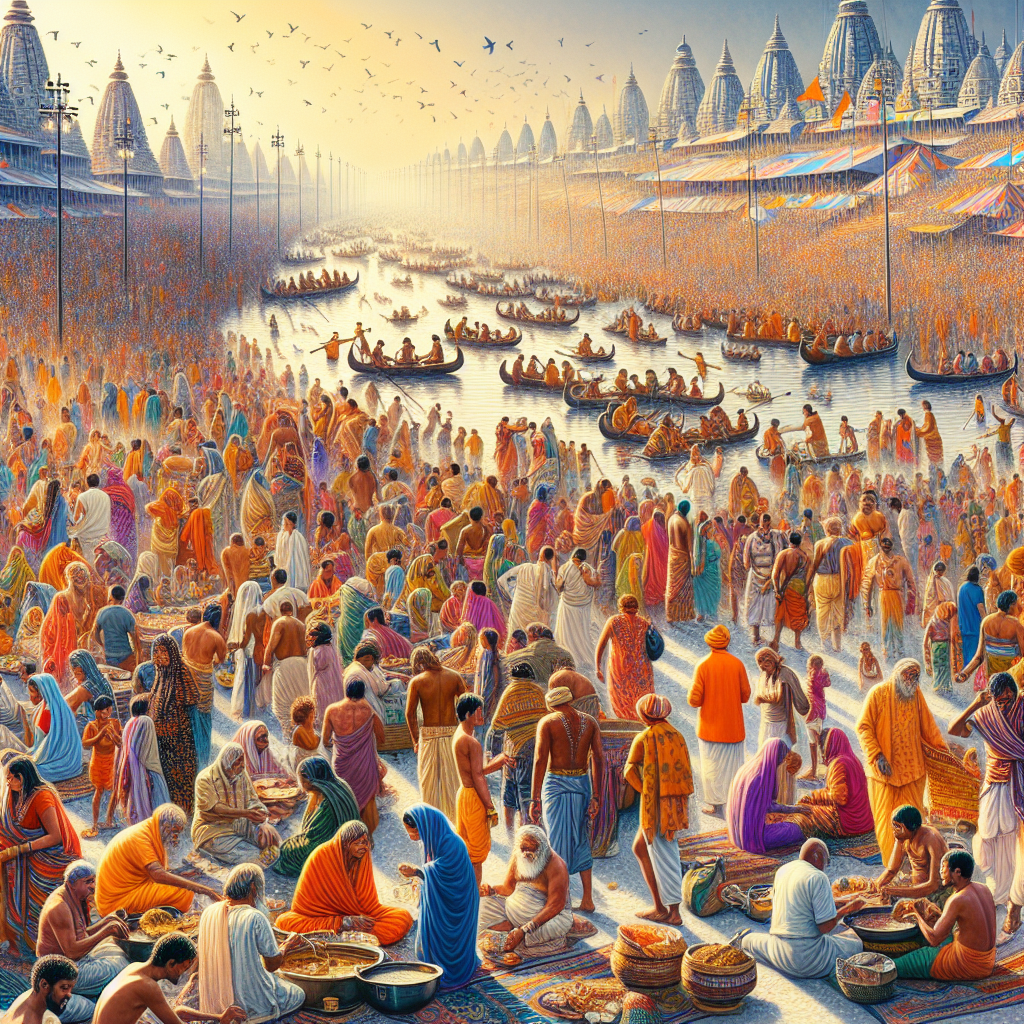[ad_1]
From Rituals to Cultural Experiences: The Allure of Maha Kumbh Mela
The Maha Kumbh Mela, a grand confluence of spirituality, tradition, and culture, occurs every twelve years at the sacred confluence of the Ganges, Yamuna, and the mythical Sarasvati rivers in India. While its spiritual significance dates back centuries, the festival has evolved into a captivating cultural phenomenon that attracts millions from around the globe. It is not merely a religious gathering but a vibrant tapestry of rituals, communal bonds, and contemporary cultural expressions.
Historical Roots and Spiritual Significance
The origins of Kumbh Mela are steeped in mythology and spirituality. It is said to have begun over 2,000 years ago and is associated with the legendary churning of the ocean (Samudra Manthan) when gods and demons sought the nectar of immortality, or amrit. The festival signifies the victory of good over evil and invites pilgrims to cleanse their sins through a holy dip in the confluence waters, believed to provide liberation (moksha) and spiritual merit.
The Maha Kumbh Mela is marked by its unique cycle, occurring at four designated locations: Haridwar, Allahabad (Prayagraj), Nashik, and Ujjain. Each location signifies a unique aspect of spirituality, with Allahabad being the most significant, hosting the Maha Kumbh once every twelve years. The magnitude of this gathering can be overwhelming; in 2013, over 30 million people are estimated to have attended in a single day, making it one of the largest peaceful gatherings in the world.
Rituals and Practices: A Spiritual Spectacle
At the heart of the Maha Kumbh Mela lie its rituals. Pilgrims immerse themselves in the cleansing waters, participate in elaborate ceremonies, chant sacred mantras, and visit the numerous temporary ashrams and tent cities that spring up during the festival. The sight of holy men, known as sadhus and babas, adorned in distinctive attire, further adds to the mystique. These ascetics, often representing different sects and philosophies of Hinduism, impart spiritual wisdom and engage with visitors, sharing their experiences and insights into the pursuit of enlightenment.
Beyond the physical purification, attendees engage in communal prayers and gatherings, drawing on a collective consciousness that reverberates through the grounds. The sounds of devotional music, the scent of incense, and the sights of colorful processions and cultural performances create an ambiance that is a sensory feast, providing visitors with a culturally rich experience that transcends the individual.
Cultural Experiences: A Melting Pot of Humanity
While deeply rooted in ritualistic practices, the Maha Kumbh Mela has transformed into a vibrant cultural melting pot, reflecting the diversity of modern India. Art, music, dance, and craft begin to flourish in this atmosphere where traditional and contemporary intertwine. Local artisans set up stalls showcasing their crafts, while food vendors bring traditional and regional delicacies to the forefront of the experience.
The festival becomes a stage for dialogues on pressing social issues, with forums and discussions focusing on topics like environmental conservation, women’s rights, and social equity. Several NGOs and activist groups utilize this platform to raise awareness and mobilize support for various causes, making the Mela a space for active engagement and community building.
International tourists and curious seekers flock to the Kumbh, bringing with them a diverse range of perspectives and experiences. This influx fosters cross-cultural interactions that encourage understanding and exchange between participants from different backgrounds, enriching the festival’s landscape.
An Ongoing Evolution
As the world changes, so does the Maha Kumbh Mela. With advances in technology, the Mela has become more accessible through digital platforms. Live streams of rituals and events garner attention on social media, allowing a global audience to partake in the experience from afar. Virtual reality and augmented reality technologies are being explored to simulate the experience for those unable to visit in person, allowing them to connect with the spiritual energy of the Mela.
Moreover, the festival is taking steps to address environmental concerns, promoting sustainable practices to minimize its ecological footprint. Efforts to manage waste, conserve water, and maintain cleanliness are increasingly prioritized, demonstrating a commitment to preserving the sanctity of the sacred sites for future generations.
Conclusion
The Maha Kumbh Mela embodies a profound journey—one that traverses the realms of religious devotion, cultural celebration, and human connection. It serves not only as a spiritual pilgrimage for millions but also as a culturally significant event that continues to adapt and resonate with newer generations. As it beckons devotees and seekers alike, it remains a testament to the enduring allure of community, spirituality, and the rich tapestry of human experience. Whether one seeks atonement, connection, or simply the thrill of witnessing the extraordinary, the Maha Kumbh Mela stands as a vibrant celebration of life in all its forms.
[ad_2]

